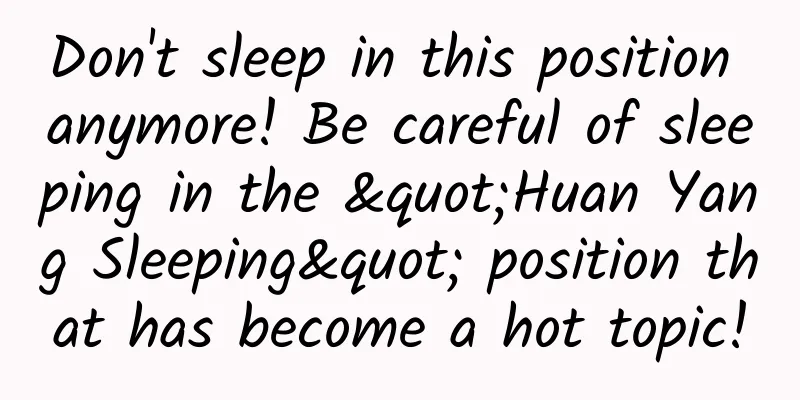Why is it okay for a woodpecker to hit a tree? It turns out we have been deceived for many years...

|
I came across this classic photo of a woodpecker and this age-old question came to mind: Why don't woodpeckers get concussions? Let's first intuitively feel the combat effectiveness of the woodpecker: Is there any afterimage left by pecking? | Image from [14] Some people may say that trees are not very hard after all, so it is not that serious. Why don’t you try pecking at a stone? Well, you know what, some people really peck at the wall: Bird-shaped building shaker There was even a case where a resident heard a continuous knocking sound and mistakenly thought it was a neighbor making noise, so he started arguing. It turned out to be the work of a woodpecker. When the woodpecker gets stubborn: Hard-Headed Woodpecker Anyone who has seen the woodpecker's performance would probably worry about its brain. With this frequency and force, it must have shaken its brain evenly, right? The display capacity of the picture is limited. As early as 1979, scholars conducted quantitative observations on the speed of woodpeckers pecking trees and found that the maximum pecking speed can reach 6~7m/s . The moment the beak hits the tree, it has to withstand an acceleration of 1000g (g is the acceleration of gravity, about 9.8m/s²). What's even more terrifying is that woodpeckers can peck at a frequency of 20 times per second , an average of about 12,000 times a day. This high-intensity repeated impact may cause great pressure on the eyeball, retina, brain nerves, blood vessels, etc. You may not have a clear idea of the speed of 6~7m/s. Let me give you some loose examples. It's like when we run 1km at a pace of 2:30 and suddenly run into a tree. Or it's equivalent to falling off a 1.8m bed (the height of the bunk beds in high school and university dormitories is just this high). Visible pain | Image from [15] One word: pain! The scary thing is that woodpeckers hit their heads 12,000 times a day, which makes people very curious! People also expect that research on woodpeckers can help make better helmets and better anti-vibration devices; in addition, research on this issue may also help with medical treatment of human concussions. Many sports such as football, rugby, and boxing may also cause serious head injuries. There are many scientific studies on this issue, involving mechanics, biology, medicine and other fields. The related work also won the Ig Nobel Prize in 2006. People's understanding of this issue has also undergone interesting changes. However, this question cannot be fully answered to this day! If we think about it in the simplest way, the focus of the problem is probably on the woodpecker's head structure, pecking technique, and of course, the possible small size effect of birds compared to humans. Strange head structure When people carefully studied the musculoskeletal structure of the woodpecker's head, they quickly discovered several features that might help it resist impacts. The most notable of these was the spongy bone between the beak and the skull . Schematic diagram of the woodpecker skeleton. The green part is the spongy bone. Image from [3] The bone has a porous structure, and it is very likely that it acted as a sponge during the pecking process, absorbing the impact to a large extent ! Everyone was very happy about this discovery, and even the field of materials science began to support this view and began to evaluate the role of this structure in the manufacture of shock-absorbing composite materials. The idea of cushioning and shock absorption is so natural that no one doubted it for a long time . In the popular science that was overwhelming in the early years, this idea was also everywhere, and you can find a lot of it by just searching on the Internet. But if you think about it carefully, you may find the problem: Yes, the buffering measures can effectively reduce brain damage, but if the spongy bones here really absorb some of the "impact", wouldn't the impact transmitted to the tree through the beak be reduced! It's like a hammer is divided into two halves and connected by a spring in the middle, so the energy of the part of the iron block far away from the hammering point cannot be transmitted to the hammering point quickly, which will greatly reduce the force of the hammer. Finally, in 2022, someone carefully studied whether there are shock-absorbing measures during the woodpecker's pecking process. Using a high-speed camera to track the position and speed of different points on the beak and head | Image from [3] The study used high-speed cameras to shoot more than 100 pecking videos of different woodpecker species for analysis and tracked specific points. The results were surprising: the acceleration and deceleration of these points were completely synchronized ! In other words, there is no buffer zone in the middle, and the entire head forms a solid whole! The team also carefully examined the effect of the presence of a buffer on pecking efficiency: Relationship between spring stiffness coefficient, wood penetration depth and impact absorption efficiency when head momentum is fixed | Figure from [3] Calculations show that the buffer itself will reduce the pecking efficiency ! This fact is so unexpected, but also reasonable. In order to achieve better pecking performance, the woodpecker chose to make the head into a more compact "rigid body" and remove the buffer part. The "buffer" view was widely spread for various reasons, and it took so long to be questioned, which is also a very interesting phenomenon in the development and dissemination of science. Does the woodpecker have no other structures to reduce the impact on the brain? Of course, there are many opinions that say there is, such as the widely accepted: 1 Brain-skull tightness theory The woodpecker's brain is more tightly integrated with the skull and contains less cerebrospinal fluid, making it less likely for the brain to move relative to the skull, thus reducing damage. There are many other viewpoints. However, from the above lessons, we can see that some viewpoints seem reasonable at first glance, but they still need to be supported by quantitative analysis and precise observations, such as the following. 2 Muscle transmission theory The beak contracts when it hits a tree, transmitting the impact to the lower and back of the skull and skipping the brain. This statement is too qualitative, and there are also views that hold the opposite view, believing that woodpeckers do not have very developed head and neck muscles. 3 Hyoid entanglement theory There is also a view that the tongue, when tightly wrapped, can act as a "seat belt." The tongue of a woodpecker is very unique! Unlike most creatures that stick out directly from their mouths, the tongue of a woodpecker starts from the upper jaw, then passes through the right nostril, forks and goes around the back of the skull, then comes back from both sides of the neck and merges into one before sticking out of the mouth! (As shown below) Schematic diagram of the structure of a woodpecker's tongue | Source [11] 4 Vertical impact theory Every time a woodpecker pecks, its beak is almost perfectly perpendicular to the surface, ensuring that the brain is not subjected to tangential forces. This view has been challenged to some extent, and some people have found through three-dimensional analysis that there is actually a certain amount of rotation. These three points all sound quite intuitive, but whether they are true or what proportion they account for still requires rigorous quantitative analysis, and no rigorous calculations or experimental support has been found. Size Effect It seems that we don’t have a concise answer from the structure. Are there any students who can’t wait to carefully analyze another factor that is easy to think of: that is the size effect! We also have this experience in our daily lives. Small things are often stronger! The nature of a mobile phone falling is definitely different from that of a computer falling. The same is true in the biological world. If a person falls, there is a high probability that nothing will happen, but if an elephant falls, there is a risk of fracture. Similarly, it is easy to think that the woodpecker's brain is much smaller than that of a human. After all, when it is smaller, it can have a larger specific surface area to share the pressure. Following the derivation of the literature, I can do some simple calculations. Assume that the brain is approximately spherical, and assume that the ratio of the main area (coronal) that bears the pressure to the total surface area is the same when it is hit, assuming that it is ar², and assume that the upper critical pressure of brain damage is the same for humans and woodpeckers, both Pc, and use h and w as subscripts to mark humans and woodpeckers respectively, then The mass and radius of a medium-sized woodpecker's brain are 2g and 7mm respectively, while the mass and radius of a human brain are 1400g and 60mm respectively. In other words, the critical value of acceleration that a woodpecker can withstand is 10 times that of a human! Of course, it is impossible to estimate the damage by only talking about acceleration without talking about time. People have obtained the following empirical formula (Gadd Severity Index) in car collision tests to estimate the extent of damage: Then we can get that the woodpecker's brain damage tolerance is times that of the human brain! In fact, it is not only that, the shape of the woodpecker's brain is quite different from that of humans, and a larger proportion of the surface area can withstand impact. Schematic diagram of pressure distribution when the human brain and bird are subjected to acceleration | Image from [3] Of course, the above derivation is relatively rough. Nowadays, precise modeling methods such as finite element analysis can analyze the force distribution in mechanical processes. Changes in stress felt by the beak and skull after impact | Image from [12] In short, because woodpeckers have a very high tolerance for brain damage, their normal pecking cannot reach this threshold at all! The size effect provides a solid foundation for the woodpecker's head's super strong impact resistance. We also hope that related mechanical calculations can analyze the influence of the head structure and give a more complete answer to this question! The woodpecker's "billion" little details In addition to their earthquake-resistant brains, what other amazing abilities do woodpeckers have? The woodpecker's tongue can extend more than three times the length of its beak, and has barbs on the front end, which allows it to efficiently eat insects in holes. Efficient insect eating. The oak woodpecker likes to dig holes in trees to store acorns. Oak woodpeckers are storing acorns. The woodpecker closes its eyes at the moment of pecking to protect its eyes from the flying wood splinters. Have you ever thought about this question, will the woodpecker's beak get stuck in the tree and can't be pulled out? Hahaha! Some researchers have carefully observed this phenomenon and found that the woodpecker will slightly rotate its head a few degrees to further create a gap to smoothly pull out the beak. Woodpeckers also make holes in healthy trees to attract insects. In addition, Gila woodpeckers also suck the brains of young birds (I had thought about what would happen if such a powerful beak was used for attack, but I was still shocked). It's quite scary, so I won't post the picture. Do you feel that the "bird setting" of Forest Doctor has collapsed? Of course, different species have different habits, so we can't generalize. We can't judge whether it's harmful or beneficial to birds from a subjective perspective. After all, nature is cruel. References [1] May PRA, Fuster JM, Haber J, et al. Woodpecker drilling behavior: an endorsement of the rotational theory of impact brain injury[J]. Archives of Neurology, 1979, 36(6): 370-373. [2] Gibson L J. Woodpecker pecking: how woodpeckers avoid brain injury[J]. Journal of Zoology, 2006, 270(3): 462-465. [3] Van Wassenbergh S, Ortlieb EJ, Mielke M, et al. Woodpeckers minimize cranial absorption of shocks[J]. Current Biology, 2022, 32(14): 3189-3194. e4. [4] May PRA, Newman P, Fuster JM, et al. Woodpeckers and head injury[J]. The Lancet, 1976, 307(7957): 454-455. [5] List of winners of the 2006 Ig Nobel Prize (https://improbable.com/ig/winners/#ig2006) [6] Wang L, Niu X, Ni Y, et al. Effect of microstructure of spongy bone in different parts of woodpecker's skull on resistance to impact injury[J]. Journal of Nanomaterials, 2013, 2013: 17-17. [7] Liu Yiren, Jiang Zhongping. Why woodpeckers don’t suffer from concussions[J]. Construction Workers, 2011, 32(09):50. [8] Yang Hua. Why woodpeckers don’t get concussions[J]. Friends of Science, 2006, (05): 50. [9] Why don’t woodpeckers get concussions? (Includes construction animation) (https://www.guokr.com/article/449305/) [10] Zhou P, Kong XQ, Wu CW, et al. The novel mechanical property of tongue of a woodpecker[J]. Journal of Bionic Engineering, 2009, 6(3): 214-218. [11] The woodpecker's tongue is so strange, what good does it have for it? - Zhihu (zhihu.com) [12] Lizhen Wang, et al. Why Do Woodpeckers resist head impact injury: A biomechanical investigation, PLoS ONE 6(10): e26490. doi:10.1371/journal.pone.0026490, 2011 [13] Yu Tongxi. Why can woodpeckers avoid brain damage? [J]. Mechanics and Practice, 2012, 34(03): 86-87. [14] Ta-da! A close-up look at the famous scene of a woodpecker chiseling a tree (https://www.bilibili.com/video/BV1ZU4y1f7Pj/?spm_id_from=333.999.0.0&vd_source=20b27633457fdd53f9cb8bc0199f7c07) [15] Dog hitting the door (https://www.bilibili.com/video/BV1Fs4y1n7TE/?spm_id_from=333.337.search-card.all.click&vd_source=20b27633457fdd53f9cb8bc0199f7c07) Planning and production Source: Institute of Physics, Chinese Academy of Sciences Author: Xiao Fan Editor: Yinuo |
Recommend
Samsung imitates Apple to a new level: copying a Steve Jobs
In the confrontation with Apple, Samsung has alwa...
The latest news on Shenzhen’s lifting of lockdown in 2022: When exactly will the epidemic be lifted?
In recent days, Shenzhen has reported new local c...
If you want to be successful in operations, you must first learn this!
A product project team usually includes members o...
Useful Information | What does a high-conversion information flow ad look like?
For information flow advertising , the content an...
Breakthrough Academy Online Course Monetization Training Camp: Turn knowledge/experience/skills into money in 10 days
Breakout Academy Online Course Monetization Train...
Methods and techniques to build a brand without spending money
Everyone must like the idea of building a brand...
Aviation, aerospace, astronautics... can you tell them apart? | Expo Daily
Aviation, aerospace, astronautics...can you tell ...
Why is it tangerines that beat cherries during the Chinese New Year?
Reviewer: Wang Guoyi Postdoctoral fellow in Nutri...
10 design principles that developers should know
Why should I care? Developers are designers too, ...
China's new energy vehicle production is expected to account for 40% of the global total this year
"According to estimates based on this year&#...
20 Lectures on Negotiation Skills: Break the Win-Lose Mindset and Easily Achieve Good Results
20 Lectures on Negotiation Skills: Break the Win-...
Android performance optimization - detailed explanation of memory management explosion caused by OOM crash
[[414819]] Preface In app development, images are...
Even Google Play Store can’t tell the difference between real and fake WhatsApp
Let me tell you a shocking news: a pirated softwa...
After using these features of Feishu, I uninstalled Word, Xmind, and OneDrive.
Similar to the social software track, after years...
A must-read for mobile app developers: 14 ways to get your app accepted by the App Store
[[161389]] 【51CTO.com Quick Translation】For devel...









